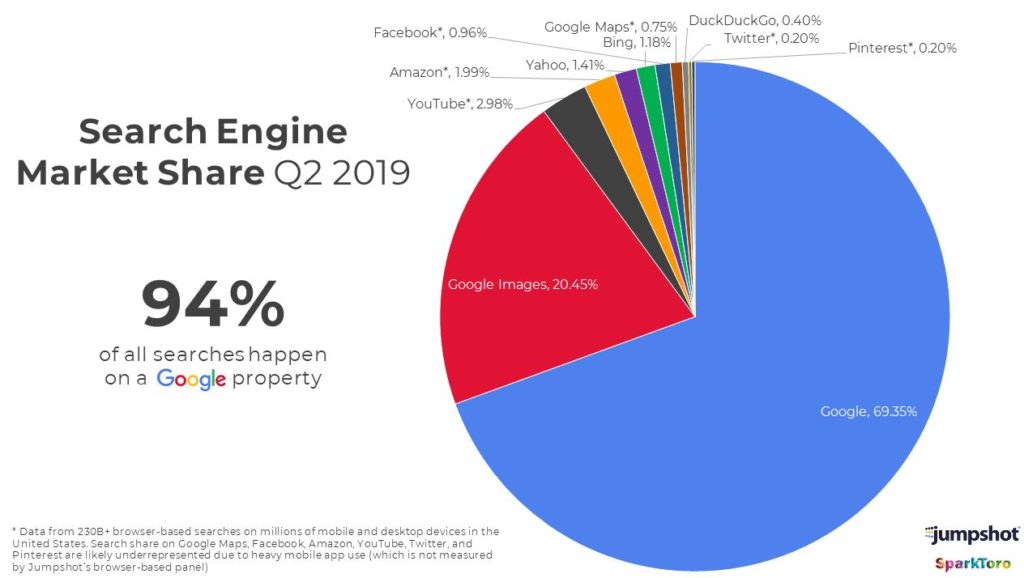New data published by SparkToro’s, Rand Fishkin reveals that the troubling trend of “zero-click” searches on Google is growing.
Next steps for search marketers
Zero-click searches result in users remaining on a Google-owned property such as Google.com, Google Images, Google Maps, and YouTube rather than moving on to a third-party website from an organic search result.
Mr. Fishkin first wrote about this phenomenon last October[1], highlighting how millions of queries are answered directly on the search results pages using content that Google scrapes from other people’s websites.
Zero-click searches outpace organic-click searches for the first time ever
The zero-click data, reported by data intelligence platform Jumpshot, reveals that zero-click searches comprised just under 55%[2] of all searches on Google in June 2019. This is the first time zero-click searches have exceeded organic clicks since Google’s launch 20 years ago.

Fishkin makes an important distinction between zero-click searches which already cannibalize organic traffic to external websites versus Google[3] sending traffic to their own properties – essentially, Google is doing both.
Fishkin notes that about six percent of queries and 12% of clicks are being funneled to Google-owned properties such as YouTube, Map’s, and Google’s own blog.
Google dominates mobile searches
The Jumpshot data[4] referenced above only includes browser-based searches, but mobile search using Google properties is ubiquitous.
When factoring in mobile apps, Google’s total market share is a staggering 97% (including mobile and desktop searches). This number includes searches from the Google Maps, Google Search, and YouTube apps which are installed on everyone’s phone.

The Jumpshot data reveals a clear connection[5] with the diminishing number of

